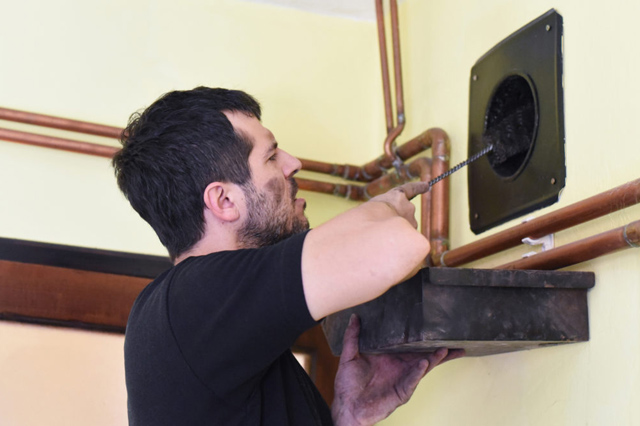Chances are, if you own your home, you have a working HVAC system to heat and cool your home. But now everyone is aware of how HVAC systems work. Insight into the workings of your heating and cooling system can be quite useful, especially in keeping it running effectively.
One of the best ways to ensure that your HVAC system is functioning as it should is to schedule a yearly duct cleaning. Not only will this extend the life of the system, but it can help lower energy costs
Keep reading to find out more about how HVAC systems work!
How HVAC System Work: A Breakdown for Homeowners
Firstly, let’s take a closer look at the various components that make up your HVAC system. Keep in mind that this may vary as there are different types of HVAC systems.
- Furnace: Typically, the furnace is the largest part of most HVAC systems. Its function is to heat the air before it is distributed to various rooms in your home via piping or ductwork. Heat pumps, combustion, eclectic resistance, and solar energy are just a few examples of types of furnaces.
- Vents: These outlets distribute the air throughout your home, they can be located on the floor or near the ceiling. Cleaning your vents regularly will prevent blockages while promoting clean air.
- Condensing Unit: Located outside your home, this unit is filled with refrigerant gas that when cooled, is pumped via the evaporator coil to once again be transformed into gas.
- Refrigerant Lines: Used to carry the gas form of the refrigerant to the condensing unit where it is then transferred to liquid form before it is then again transferred to the evaporator coil
- Evaporator Coil: Used to cool down the air whenever you lower your thermostat, this air is then dispersed throughout your house.
- Thermostat: Typically installed in a wall wherewith central access, the thermostat is the instrument that regulates the temperature in your home. It can be programmed to keep your home at a comfortable temperature. As the ambient temperature changes, the thermostat will then trigger the system to circulate warm or cool air as needed.
Types of HVAC Systems
Now that you have an idea of how HVAC systems work, here are some of the different kinds of systems you may encounter.
- Zoned HVAC Systems: a zoned system allows you to heat or cool different areas or “zones” of your home via controlled dampers or valves in the duct system. Zoned HVAC systems are highly energy-efficient and ideal for bigger homes.
- Heating And Air Conditioning Split System: As the traditional HVAC system, this type of system typically has an air conditioner located outside your home while the furnace is located inside your home. Using ductwork, the air is then distributed throughout your home. Modern systems are more energy-efficient and come with additional accessories such as humidifiers, cleaners, and air purifiers.
- Duct-Free Split System: As implied by the name, this HVAC system functions without ducts. It is ideal for retrofitting houses that do not have ducted heating systems. As well, they are suited for those areas in your home that are not able to be fitted with typical ductwork.
- Humidity Control: Generally, the majority of modern HVAC systems provide the option for humidity control. As well, both dehumidifiers and humidifiers are options, depending on the climate conditions. This system gives you the ability to control the level of humidity in your home while your HVAC system is operational.
Contact Comfort Clean for a free estimate for air duct cleaning, as well as dryer vent cleaning. Clean vents are essential to a happy and healthy home.

